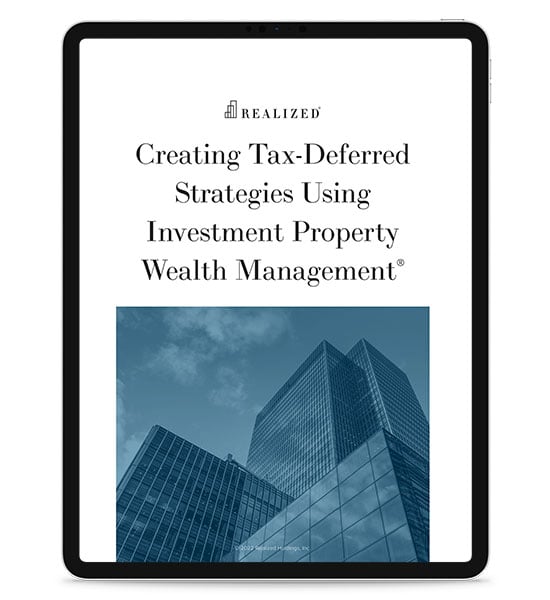
According to the Merriam-Webster dictionary, the word “deferral” is the act of delaying or postponement. Accordingly, deferring taxes means pushing the tax payment to a future date. Using various techniques, taxpayers can defer taxes on income, earnings, and capital gains. Let's take a look at some of the standard options.
Understanding income taxes.
Almost everyone pays income taxes, and the rates applied to ordinary income are progressive. That means the more you earn, the higher the tax percentage due to the federal or state government. The IRS adjusts tax brackets periodically for inflation. For example, the highest bracket for 2022 is 37 percent for incomes over $539,900 for a single filer ($647,850 for a married couple filing jointly). In 2023 the 37 percent top bracket kicks in at $578,125 ($693,750 for the couple filing together). So if you are taxed at the highest level in 2022 but your income didn't increase as much as the bracket, you could benefit from a lower 2023 tax rate.
Also, keep in mind that being in the top bracket doesn’t mean that all of your income is subject to the 37 percent rate. Only income over that threshold is taxed at the highest rate, while income below that amount is levied at the applicable percentages. So, the first $10,275 is taxed at ten percent, the amount from $10,276 to $41,775 is taxed at 12 percent, and so forth.
Furthermore, the calculations are based on your adjusted gross income, which is typically less than your gross income. Gross income includes salary or wages, investment income, capital gains, and other sources of income. Adjustments are allowed to reduce that total, including contributions to retirement accounts, some medical expenses, capital losses, student loan interest payments, alimony payments, school expenses, and allowable deductions.
Deferring income taxes.
If you have a higher income, you may benefit from deferring payment of some income taxes into the future if you expect your income to be lower. For example, some people expect their retirement income to be less than their income while working. In that case, you would benefit from paying taxes on income later, at the lower level.
One way to defer income taxes is to delay receiving the income. For example, some well-compensated professionals can push part of their present compensation into the future, thus lowering their current income and tax obligation. Another way to do this is by contributing to a tax-advantaged retirement plan like a 401(K) or an IRA (Individual Retirement Account). While a 401(k) account is sponsored by an employer, an IRA is available for individual taxpayers to fund. Your contributions to a qualified retirement account are not taxed now; instead, you pay taxes when you take withdrawals from the account. Also, the earnings in the account are tax-free until you withdraw them.
Deferring capital gains taxes.
Besides taxes levied on ordinary (earned) income, taxpayers may owe taxes on increases in the value of investments, like stocks and real estate. Capital gains are taxed at the ordinary income rate if the investor has owned the asset for less than a year and at a lower rate if they have held the investment for more than one year. Currently, the highest rate applied to capital gains is 20 percent.
Suppose you want to sell real estate and reinvest the proceeds into a new piece of investment property. If you do so, you will owe capital gains taxes on the difference between the sale price and your adjusted basis. The adjusted basis is determined by adding the purchase price, the costs associated with the acquisition, and the cost of improvements minus depreciation allowed. Paying the taxes when you sell the property will leave you with less money to reinvest.
You can defer the payment of the capital gains taxes by using a 1031 exchange to execute the transaction. This tool does not eliminate the taxes due but allows you to defer them. 1031 exchanges replace the original property with another investment real estate asset, and the process is detailed. Taxpayers must comply with tight deadlines and documentary requirements to succeed.
However, 1031 exchanges are allowed sequentially, meaning the taxpayer can execute repeated deferrals of accumulated capital gains while relinquishing and replacing property. Ultimately, a taxpayer can complete the process by distributing the final property to an heir, who will receive it at the stepped-up value, effectively eliminating the tax due.
This material is for general information and educational purposes only. Information is based on data gathered from what we believe are reliable sources. It is not guaranteed as to accuracy, does not purport to be complete and is not intended to be used as a primary basis for investment decisions. It should also not be construed as advice meeting the particular investment needs of any investor.
Realized does not provide tax or legal advice. This material is not a substitute for seeking the advice of a qualified professional for your individual situation.
Costs associated with a 1031 transaction may impact investor’s returns and may outweigh the tax benefits. An unfavorable tax ruling may cancel deferral of capital gains and result in immediate tax liabilities.
Hypothetical examples shown are for illustrative purposes only.



